
PUMPA - SMART LEARNING
எங்கள் ஆசிரியர்களுடன் 1-ஆன்-1 ஆலோசனை நேரத்தைப் பெறுங்கள். டாப்பர் ஆவதற்கு நாங்கள் பயிற்சி அளிப்போம்
Book Free DemoSilk always has a huge demand due to its unique fibre quality. The story of silk itself is a captivating one. Ancient Chinese people discovered silk fibres from the silkworm.
Silk is known as the Queen of fabrics.
Silk is an excellent smooth, strongest natural fibre and its the secretion of silkworms. The mulberry silk is the cultivated silk form.
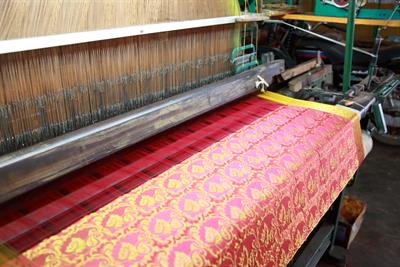
Silk threads used in making silk fabric
The other silk forms are Eri, Tasar and Muga silk. It is an animal fibre obtained from silkworms, Bombyx mori.
Sericulture is the cultivation of silkworms for silk production.
Process of silk formation:

Silkmoth (Bombyx mori) female and eggs
The rearing of silkworm is by raising the larvae of Bombyx mori. There are two essential stages in sericulture are
- To take care of worms from the egg to cocoon formation
- Producing mulberry trees to provide food as they feed on mulberry leaves.
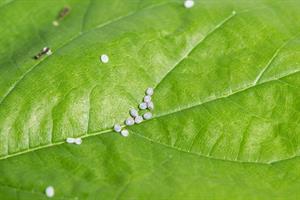
Silkworm eggs on mulberry leaves and newly hatched silkworms
The caterpillar builds the cocoon around itself, with a long, continuous fibre secreted from their glands and gets hardened on exposure to air.
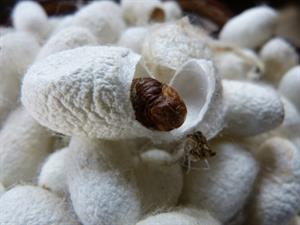
Silkworm cocoon

Cocoons in hot water
Once the cocoon is formed, the larva is killed by exposing it to hot air or steam at the chrysalis stage. This process keeps the silk filament without breaking and removes the cocoon's sticky substance and makes the filaments loosen, which is then unreeled. The loosen fibre is then moved from left to right by hand and is slowly rolled up. This process is known as reeling.
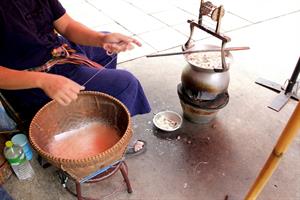
Reeling of silk
The reeled silk is called as the raw silk, which contains sericin. The transformation of silk fibre to yarn is known as throwing.
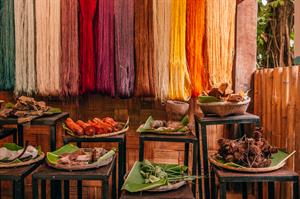
Dyed silk threads
The spun silk is the silk made from damaged silk filaments which is of short length. The final treatment of the silk to increase its density, weight etc., is known as weighting.
Characteristics of silk:
Characteristics of silk:
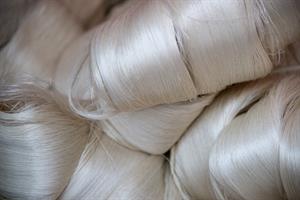
Silk threads
Silk has good strength and resistance to breakage and have good heat resistance compared to wool. They are soft and lightweight and are absorbent. The disadvantage of silk is that they are expensive and loosens strength when wet and stains. Silk is one among the strongest natural fibres is silk which is used in clothing, carpets and parachutes etc.
Fact: The silk is also taken from a spider, which is of more strength and elasticity, but it cannot be mass-produced by farming spiders.